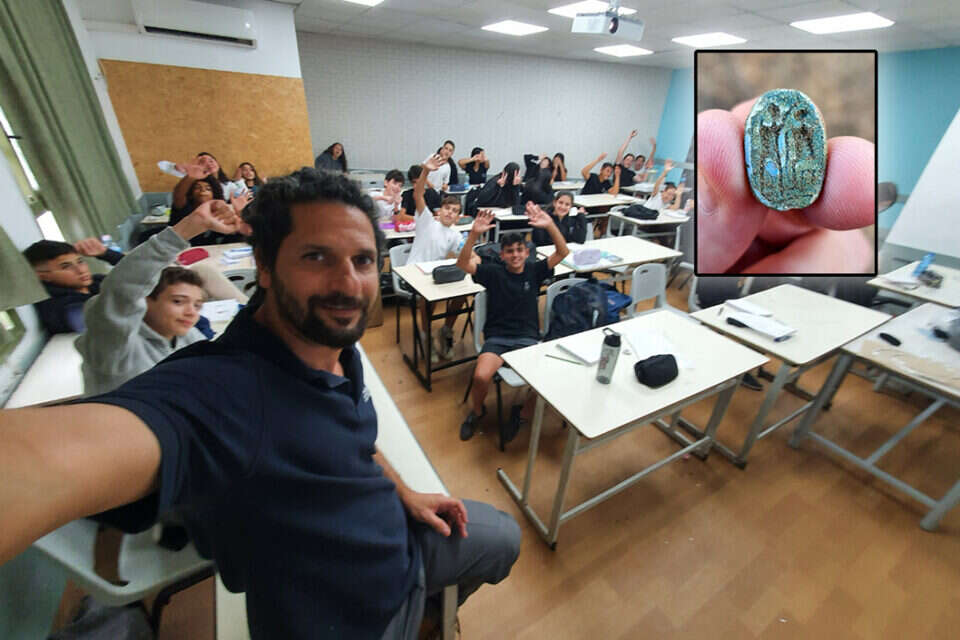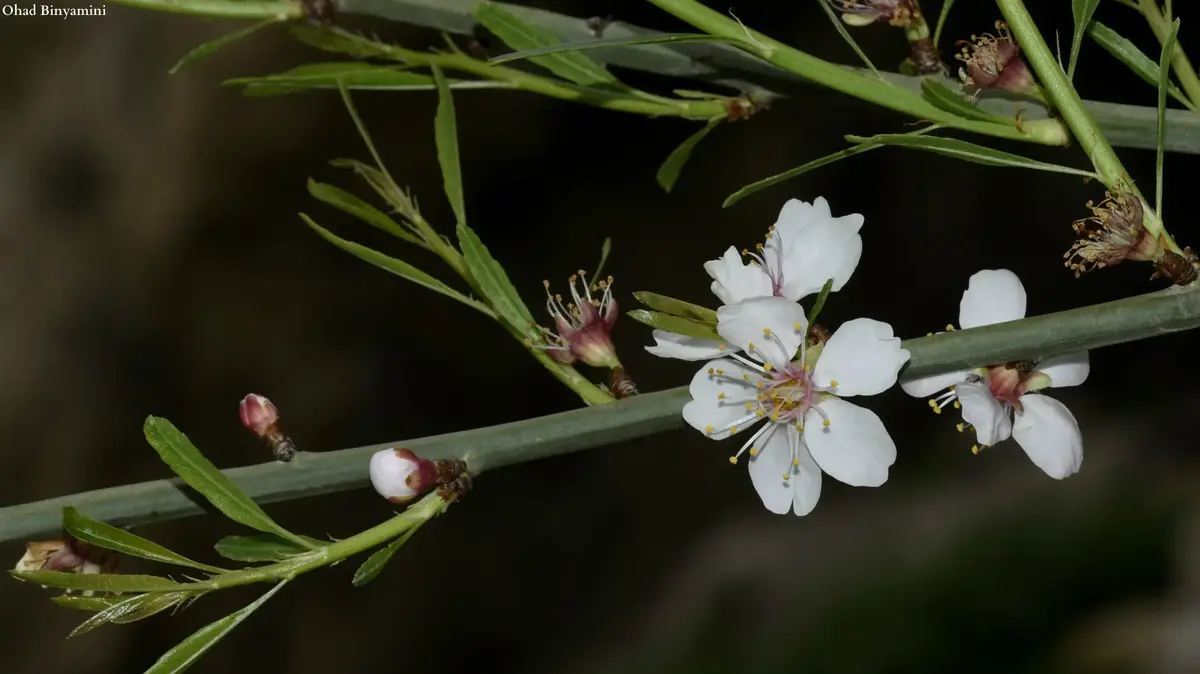A rare discovery on the school trip:
8th grade students from the "Rabin" school in the area this week uncovered a rare discovery on one of the "Mori Derech" tours.
An ancient scarab seal about 3,000 years old, the seal apparently depicts a scene of the granting of legitimacy to a local ruler.
"We walked around the area, and then I saw something that looked like a toy thrown in the sand," says Gilad Stern from the Archaeological-Educational Center of the Antiquities Authority, who guided the tour.
"An inner voice told me to pick it up and turn it over.
I was amazed, it's a scarab with a really clear engraving.
Every archeology enthusiast's dream.
The excitement of the students was enormous.'
The tour of the archaeological site of the Antiquities Authority with the 8th grade students from the "Rabin" middle school took place as part of the 'Guides' course, which is delivered in the settlement under the guidance of the Antiquities Authority, for the third year.
This course trains the students to guide the residents of the city about the local heritage.
The close cooperation between the Antiquities Authority and the local council has recently resulted in the establishment of an impressive local museum, which presents the archeology of an area.
The scarab stamps were designed in the shape of the dung beetle.
The ancient Egyptians saw in the act of the little beetle, which rolls a ball of dung twice its size and carries its offspring, the embodiment of creation and regeneration, similar to the act of the Creator God.
The class that discovered the find, photo: Gilad Stern, Israel Antiquities Authority
Dr. Amir Golani, Bronze Age expert at the Antiquities Authority: "The scarab was used as a seal for a signature and was a symbol of power and status.
It may have been placed in a necklace or ring.
It is made of faience, a silicate material coated with a bluish-green glaze.
It may have been dropped from the hands of an important and authoritative figure who passed through the area, or it may have been deliberately buried in the ground along with other objects, and after thousands of years it came to the surface today.
It is difficult to know the exact connection.'
In the lower, flat part of the seal, a figure is depicted sitting on a chair and in front of her is a standing figure, whose arm is raised above the sitter's head.
The standing figure has an elongated head, which expresses the crown of an Egyptian pharaoh, and it is possible that a scene of conferring authority on behalf of the Egyptian Pharaoh to a local Canaanite subject is depicted here.
"Dung beetle".
The outer part of the seal, photo: Gilad Stern, Israel Antiquities Authority
Receiving the local ruler.
The seal, photo: Gilad Stern, Antiquities Authority
"This is a situation that reflects the geopolitical reality that prevailed in the land of Canaan during the Late Bronze Age, when the local Canaanite rulers lived, and sometimes rebelled, under Egyptian political and cultural rule," says Dr. Golani.
"Therefore, it is very possible that the seal is indeed from the Late Bronze Age, when the local Canaanites were ruled by the Egyptian Empire."
The scarabs are indeed a distinct Egyptian characteristic, but their wide distribution also reached outside the borders of Egypt.
Hundreds of scarabs were discovered in the Land of Israel, mainly in graves, but also in settlement layers.
Some of them were imported from Egypt, and many of them were made in Israel under Egyptian influence, by local artists.
The level of workmanship of the particular scarab that was found is not typical for Egypt and therefore it seems that it is a local craftsman.
Eli Escozido, director of the Antiquities Authority, said: "Finding the scarab precisely during a tour given to students in the ``Guides'' course is symbolic: while the students acquired and received archaeological knowledge, they also contributed to its expansion.
This kind of collaborations excites us a lot.
We strive to connect as many communities as possible and travel to their roots.'
were we wrong
We will fix it!
If you found an error in the article, we would appreciate it if you shared it with us










